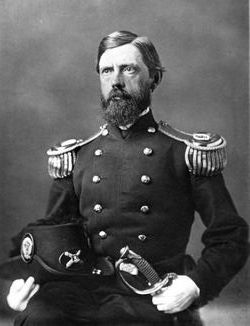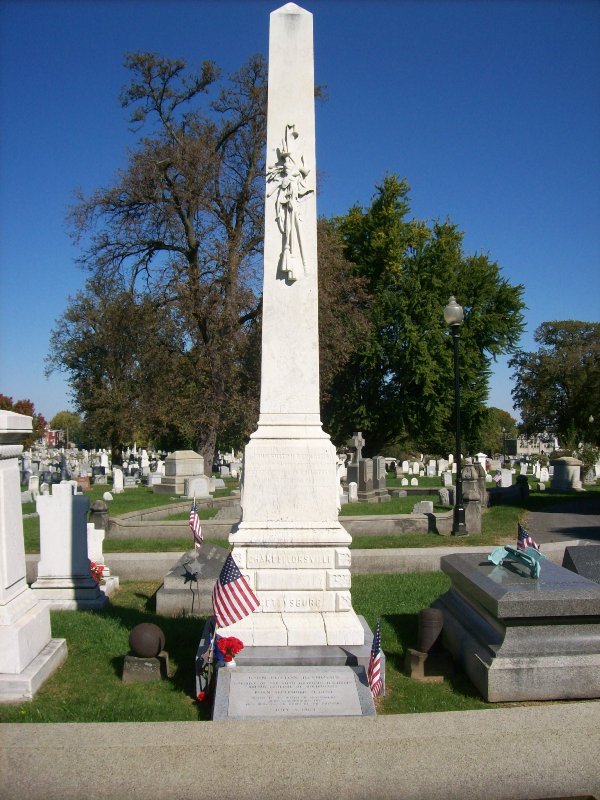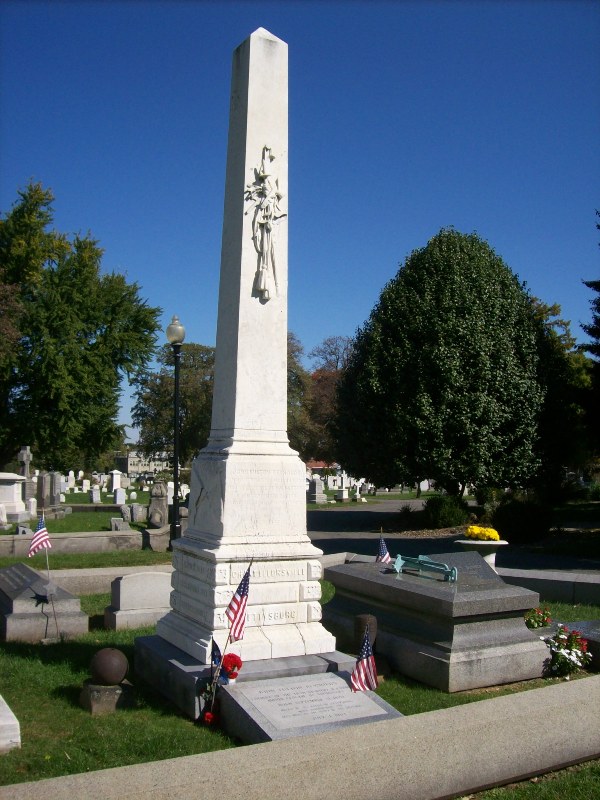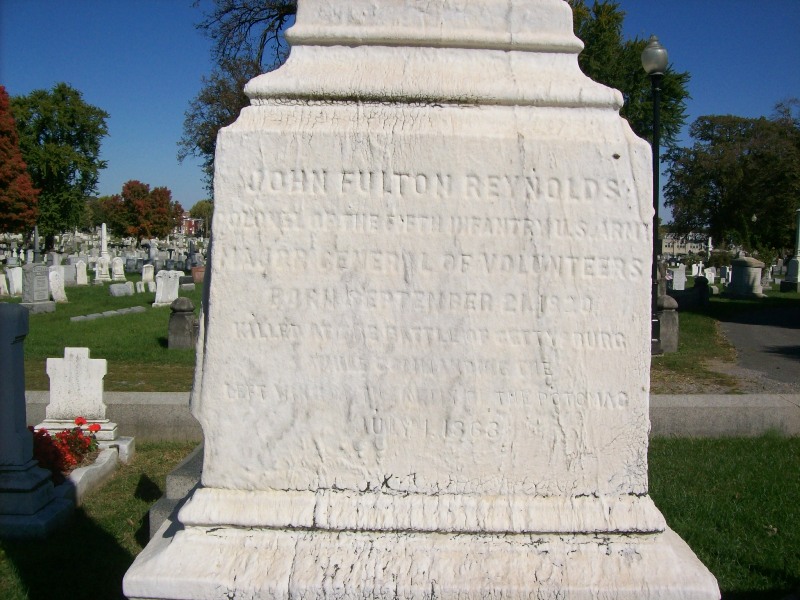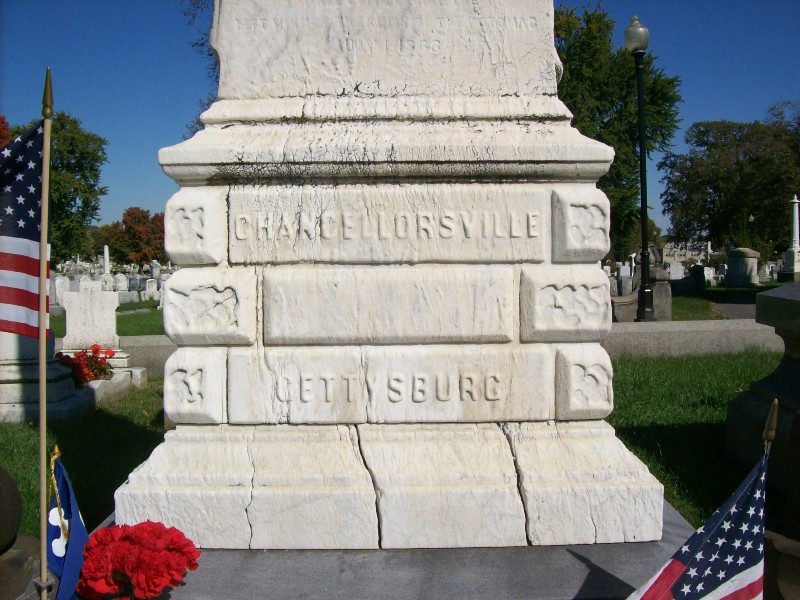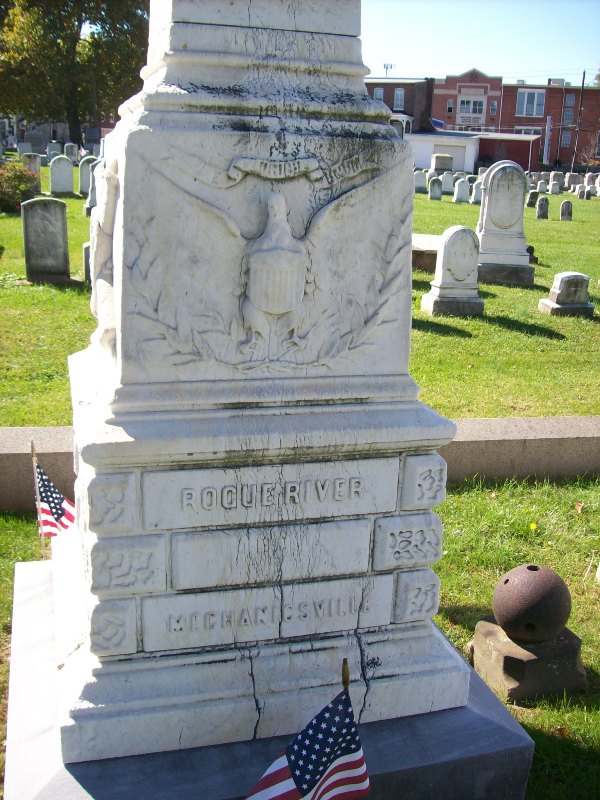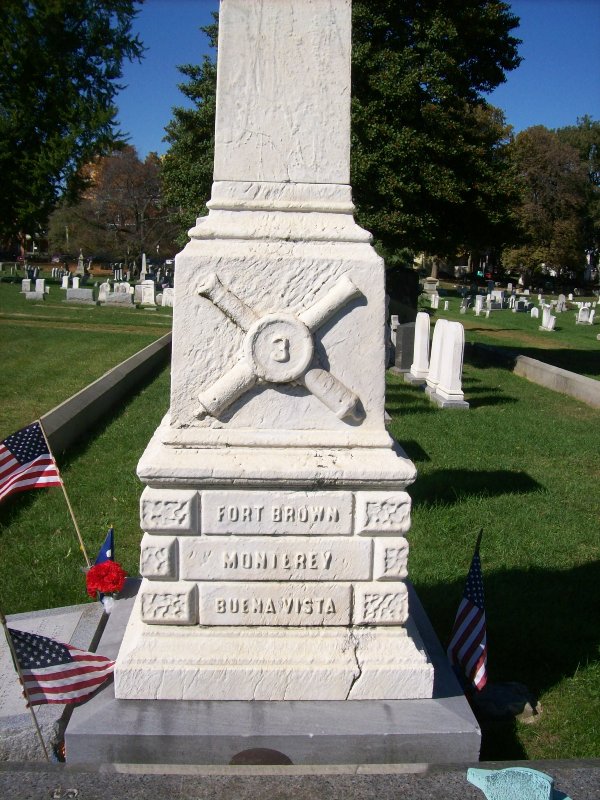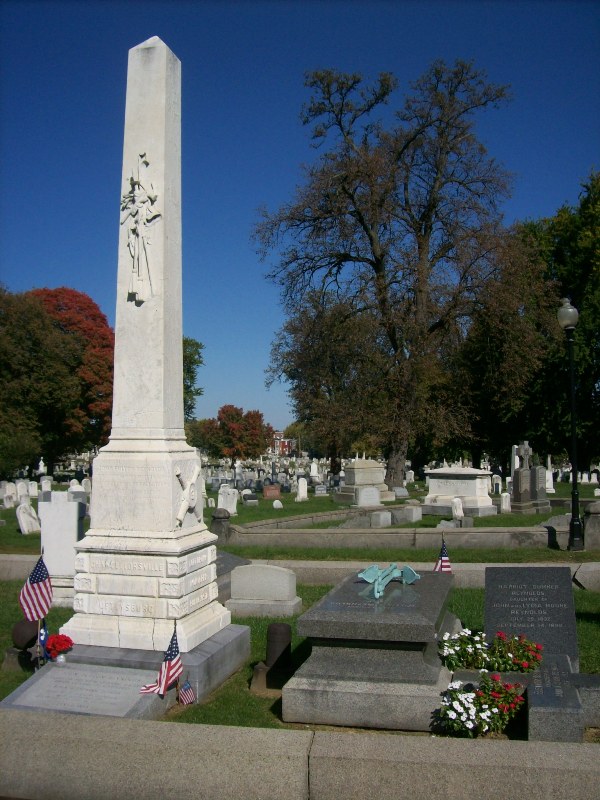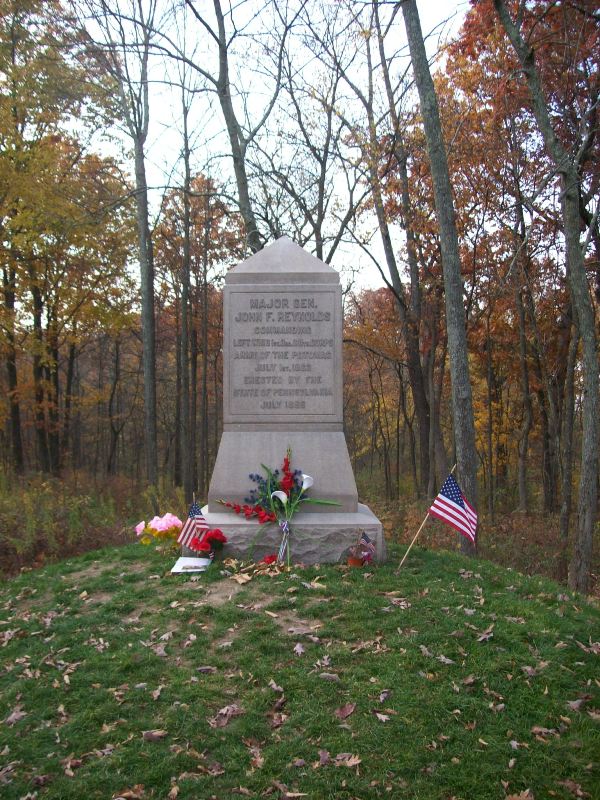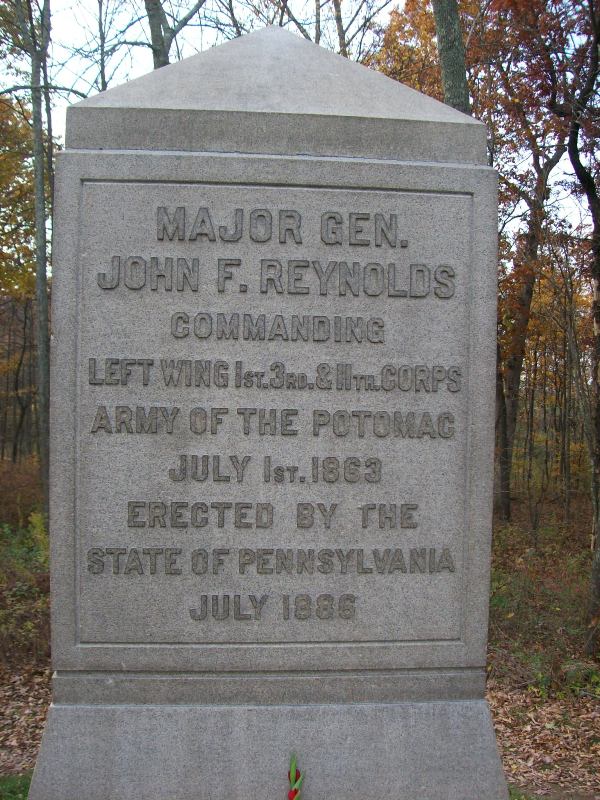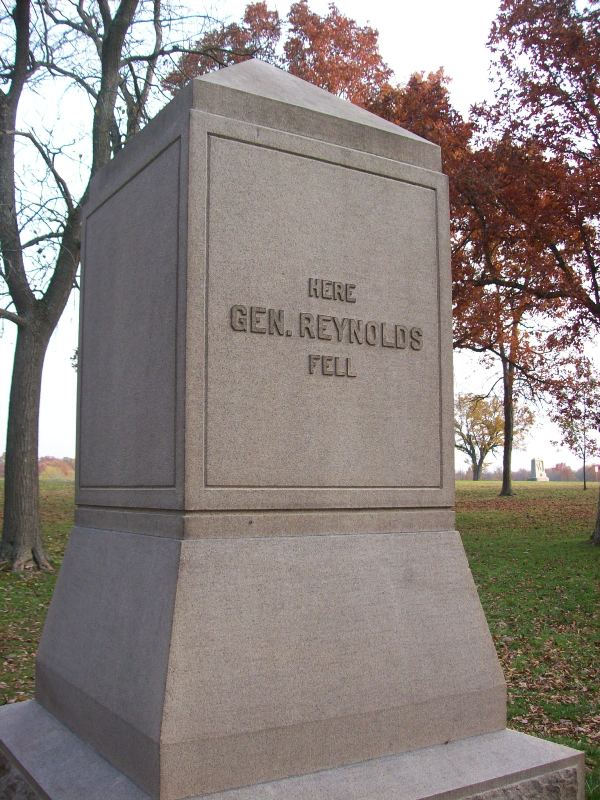Born in Lancaster, Pennsylvania, he was the fifth of twelve children. After studying in local schools, he was appointed to the United States Military Academy at West Point, New York, by then-Pennsylvania Senator and future President of the United States James Buchanan, who was a friend of the Reynolds family and a fellow Lancaster native. He matriculated in 1837, and graduated in 1841, placing 26th in a class of 52. The class contained 13 future Civil War Union Generals and six future Confederate Generals.
Assigned to the 3rd United States Artillery Regiment, he performed garrison duty in the years leading up to the Mexican War. When that conflict began in 1846, his unit was assigned to the northern United States Army commanded by Major General Zachary Taylor. He fought in a number of battles, including the Battles of Monterrey and Buena Vista, and was brevetted to Major, United States Army, for his gallantry,
After the war, he spent more time in garrison duty before being assigned to the West Coast, where he took part in conflicts with Native Americans in Oregon and Mormons in Utah. In 1860, he was assigned to his alma mater of West Point as an artillery and infantry instructor, and was named as Commandant of Cadets in September of that year. He helped guide the Cadets through the tumults of the secession crisis, which saw many in their ranks leave to fight for the Confederacy, including superintendent Pierre G.T. Beauregard.
In June 1861, he accepted a commission of Lieutenant Colonel in the newly-raised 14th United States Regular Infantry, and, in August, was commissioned as a Brigadier General of Volunteers. Assigned to command a brigade of Pennsylvania Reserves in the newly-forming Union Army of the Potomac, he oversaw their training into a superior fighting force.
In the May 1862 Peninsular Campaign under Major General George B. McClellan, he performed the duties of Military Governor of Fredericksburg, Virginia, for a time. His men were heavily engaged in the June-July 1862 Seven Days Battles, and in the June 26, 1862, Battle of Mechanicsville. They took great casualties, but withstood Confederate assaults.
In the following June 27, 1862, Battle of Gaines' Mill, his men again took large numbers of casualties, and, in the Union retreat, General Reynolds was captured by the Confederates after passing out under a tree from lack of sleep and exhaustion. Imprisoned at Libby Prison in Richmond, Virginia, he was held there until August 15, 1862, when he was exchanged for Brigadier General Lloyd Tilghman, who had been captured in February 1862 at Fort Henry on the Tennessee River.
Upon his return, he was assigned to command the Pennsylvania Reserve Division, which he led at the August 1862 Battle of 2nd Bull Run. There, his men were some of the last Union troops on the field. Directing them in a counterattack on Henry Hill, the helped delay the Confederates long enough for the Union Army to retreat.
In the September 1862 Antietam Campaign, he was assigned to train and drill the thousands of Pennsylvania militia men who were called up, thus missing the September 17, 1862, Battle of Antietam. When he returned to the Army of the Potomac, he was given command of the I Army Corps. He directed it at the December 1862 Battle of Fredericksburg, and troops from his command made the only Union breakthrough during the engagement. After the battle, he was promoted to Major General of Volunteers, which was dated back to November 29, 1862.
At the May 1863 Battle of Chancellorsville, he came into conflict with Army of the Potomac commander Major General Joseph Hooker, whose orders and counterorders to the I Corps took them out of the battle and away from where they could have participated in the fight. At a subsequent Council of War, General Reynolds voted to remain and fight, but was overruled by General Hooker, who eventually retreated. In early June 1863, he was offered the command of the Army of the Potomac by President Abraham Lincoln, but declined, allegedly because he felt he would not be given a free hand to direct Army operations.
When the Army of the Potomac began its pursuit of General Robert E. Lee's Army of Northern Virginia through Maryland and Pennsylvania, Major General Reynolds was given the overall command of the Left Wing of the Army, consisting of his I Corps, the XI Corps under Major General Oliver O. Howard, the III Corps under Major General Daniel Sickles, and a cavalry division under Brigadier General John Buford.
On July 1, 1863, the Cavalry clashed with Confederate Infantry under Major General Henry Heth, opening the Battle of Gettysburg. After two hours of intense fighting, General Reynolds and his infantry arrived on the field. He set about placing artillery and infantry positions. He was directing the positioning of men from the I Corps' famed "Iron Brigade" near the Herbst Woods northwest of Gettysburg when he was struck in the head and instantly killed. (Lore has grown up over the years that he was felled by a Confederate sharpshooter, but no sufficient historical evidence has been found to support this.)
His body was immediately brought off the field so as to not demoralize his men, and was sent home to his sister's residence in Philadelphia, Pennsylvania, where funeral services were held. Then it was transported to Lancaster, where it was interred in the family plot on July 4, 1863.
Today, he is memorialized in four places in the Gettysburg National Military Park: A monument stands where he was killed, an equestrian statue stands for him on McPherson Ridge, and two standing statues were erected – one in the National Cemetery and one on the Pennsylvania Memorial. An equestrian statue was also erected for him outside Philadelphia's City Hall. His older brother, William Reynolds, became a Rear Admiral in the United States Navy.
Born in Lancaster, Pennsylvania, he was the fifth of twelve children. After studying in local schools, he was appointed to the United States Military Academy at West Point, New York, by then-Pennsylvania Senator and future President of the United States James Buchanan, who was a friend of the Reynolds family and a fellow Lancaster native. He matriculated in 1837, and graduated in 1841, placing 26th in a class of 52. The class contained 13 future Civil War Union Generals and six future Confederate Generals.
Assigned to the 3rd United States Artillery Regiment, he performed garrison duty in the years leading up to the Mexican War. When that conflict began in 1846, his unit was assigned to the northern United States Army commanded by Major General Zachary Taylor. He fought in a number of battles, including the Battles of Monterrey and Buena Vista, and was brevetted to Major, United States Army, for his gallantry,
After the war, he spent more time in garrison duty before being assigned to the West Coast, where he took part in conflicts with Native Americans in Oregon and Mormons in Utah. In 1860, he was assigned to his alma mater of West Point as an artillery and infantry instructor, and was named as Commandant of Cadets in September of that year. He helped guide the Cadets through the tumults of the secession crisis, which saw many in their ranks leave to fight for the Confederacy, including superintendent Pierre G.T. Beauregard.
In June 1861, he accepted a commission of Lieutenant Colonel in the newly-raised 14th United States Regular Infantry, and, in August, was commissioned as a Brigadier General of Volunteers. Assigned to command a brigade of Pennsylvania Reserves in the newly-forming Union Army of the Potomac, he oversaw their training into a superior fighting force.
In the May 1862 Peninsular Campaign under Major General George B. McClellan, he performed the duties of Military Governor of Fredericksburg, Virginia, for a time. His men were heavily engaged in the June-July 1862 Seven Days Battles, and in the June 26, 1862, Battle of Mechanicsville. They took great casualties, but withstood Confederate assaults.
In the following June 27, 1862, Battle of Gaines' Mill, his men again took large numbers of casualties, and, in the Union retreat, General Reynolds was captured by the Confederates after passing out under a tree from lack of sleep and exhaustion. Imprisoned at Libby Prison in Richmond, Virginia, he was held there until August 15, 1862, when he was exchanged for Brigadier General Lloyd Tilghman, who had been captured in February 1862 at Fort Henry on the Tennessee River.
Upon his return, he was assigned to command the Pennsylvania Reserve Division, which he led at the August 1862 Battle of 2nd Bull Run. There, his men were some of the last Union troops on the field. Directing them in a counterattack on Henry Hill, the helped delay the Confederates long enough for the Union Army to retreat.
In the September 1862 Antietam Campaign, he was assigned to train and drill the thousands of Pennsylvania militia men who were called up, thus missing the September 17, 1862, Battle of Antietam. When he returned to the Army of the Potomac, he was given command of the I Army Corps. He directed it at the December 1862 Battle of Fredericksburg, and troops from his command made the only Union breakthrough during the engagement. After the battle, he was promoted to Major General of Volunteers, which was dated back to November 29, 1862.
At the May 1863 Battle of Chancellorsville, he came into conflict with Army of the Potomac commander Major General Joseph Hooker, whose orders and counterorders to the I Corps took them out of the battle and away from where they could have participated in the fight. At a subsequent Council of War, General Reynolds voted to remain and fight, but was overruled by General Hooker, who eventually retreated. In early June 1863, he was offered the command of the Army of the Potomac by President Abraham Lincoln, but declined, allegedly because he felt he would not be given a free hand to direct Army operations.
When the Army of the Potomac began its pursuit of General Robert E. Lee's Army of Northern Virginia through Maryland and Pennsylvania, Major General Reynolds was given the overall command of the Left Wing of the Army, consisting of his I Corps, the XI Corps under Major General Oliver O. Howard, the III Corps under Major General Daniel Sickles, and a cavalry division under Brigadier General John Buford.
On July 1, 1863, the Cavalry clashed with Confederate Infantry under Major General Henry Heth, opening the Battle of Gettysburg. After two hours of intense fighting, General Reynolds and his infantry arrived on the field. He set about placing artillery and infantry positions. He was directing the positioning of men from the I Corps' famed "Iron Brigade" near the Herbst Woods northwest of Gettysburg when he was struck in the head and instantly killed. (Lore has grown up over the years that he was felled by a Confederate sharpshooter, but no sufficient historical evidence has been found to support this.)
His body was immediately brought off the field so as to not demoralize his men, and was sent home to his sister's residence in Philadelphia, Pennsylvania, where funeral services were held. Then it was transported to Lancaster, where it was interred in the family plot on July 4, 1863.
Today, he is memorialized in four places in the Gettysburg National Military Park: A monument stands where he was killed, an equestrian statue stands for him on McPherson Ridge, and two standing statues were erected – one in the National Cemetery and one on the Pennsylvania Memorial. An equestrian statue was also erected for him outside Philadelphia's City Hall. His older brother, William Reynolds, became a Rear Admiral in the United States Navy.
Bio by: RPD2
Inscription
COLONEL OF THE FIFTH INFANTRY, U.S. ARMY
MAJOR GENERAL OF VOLUNTEERS
KILLED AT THE BATTLE OF GETTYSBURG
WHILE COMMANDING THE
LEFT WING OF THE ARMY OF THE POTOMAC
Family Members
-
![]()
Samuel Moore Reynolds
1814–1888
-
![]()
William Reynolds
1815–1879
-
Jane Moore Reynolds
1817–1817
-
![]()
Lydia Moore Reynolds Evans
1818–1896
-
![]()
James Lefevre Reynolds
1822–1880
-
![]()
Catharine Ferree Reynolds Landis
1825–1905
-
Edward C. Reynolds
1827–1828
-
Anne Elizabeth Reynolds
1827–1832
-
![]()
Edward B. Reynolds
1829–1829
-
![]()
Harriet Sumner Reynolds
1832–1898
-
![]()
Eleanor Reynolds
1835–1923
Advertisement
See more Reynolds memorials in:
Explore more
Sponsored by Ancestry
Advertisement
